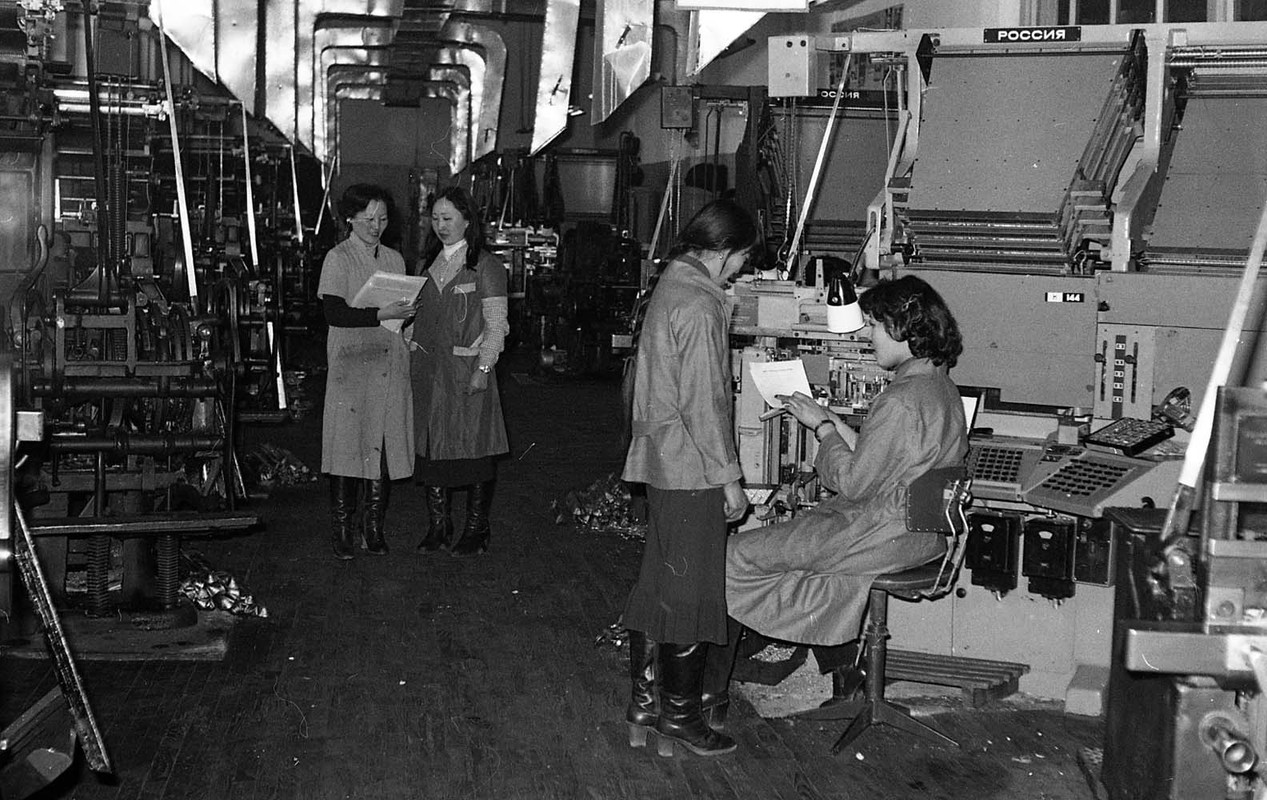
Check the “Related Pages” menu for details and pictures of Neotype linecasters.
Information about Russian linecasting machines is pretty scarce on the internet, but the Metal Type Forum has some real gems.
Yesterday’s Technology . . . Today!

Check the “Related Pages” menu for details and pictures of Neotype linecasters.
Information about Russian linecasting machines is pretty scarce on the internet, but the Metal Type Forum has some real gems.
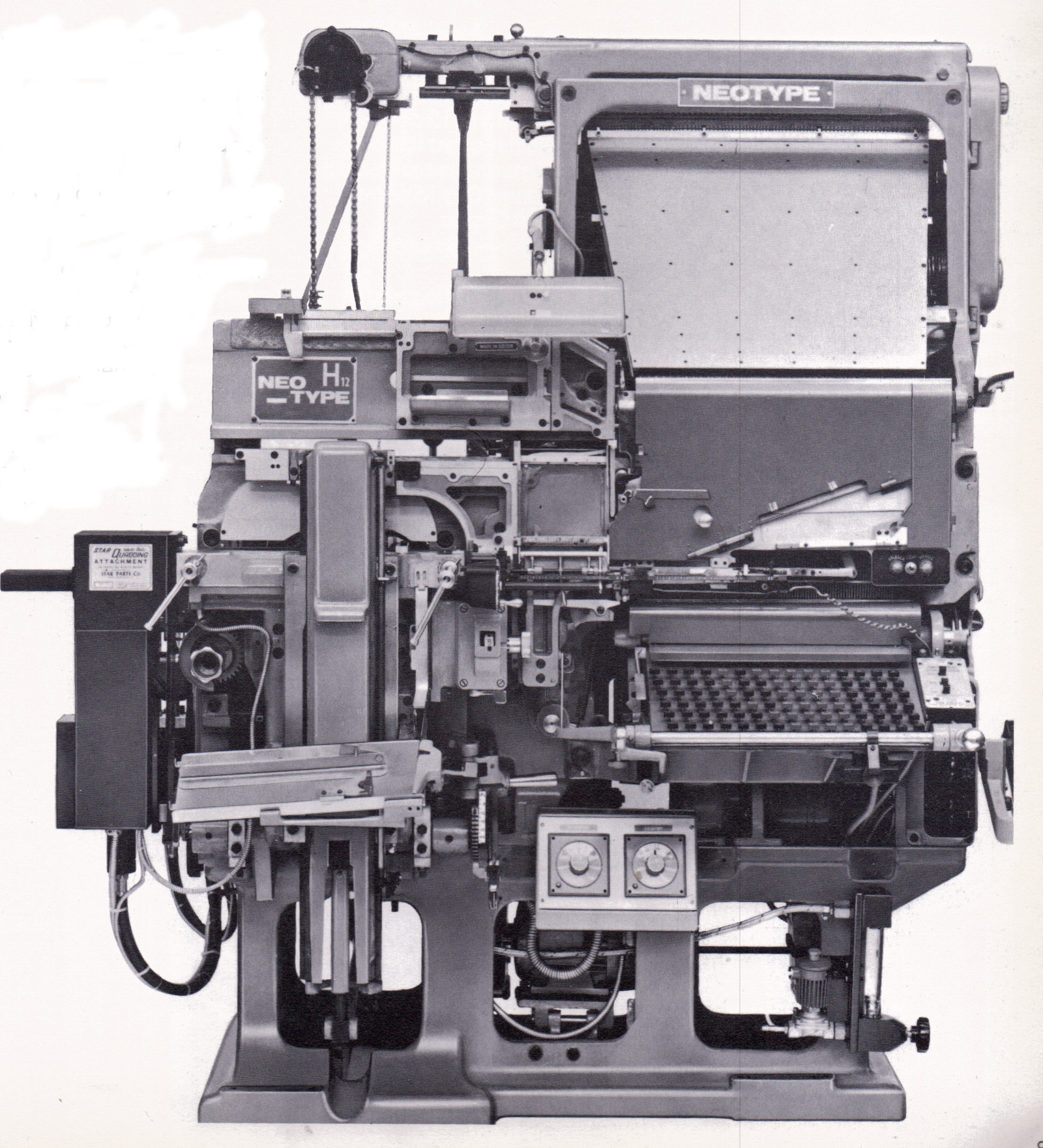
Check the “Related Pages” menu for further reading on Russian linecasters.
The following pictures and descriptions come from an un-dated glossy brochure produced by Neotype, West Germany.
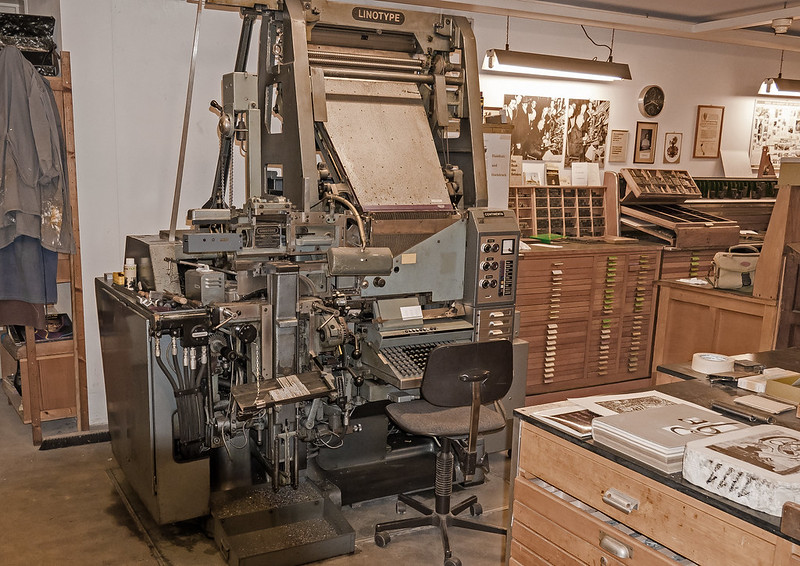
There is some lively discussion about these machines on the Forum.
There are even pictures of some of these machines “in the wild.”

“The latest development in the field of modern setting machine technology” is the heading on the cover of the leaflet promoting the Universa linecaster, one of the very few such machines to be built incorporating a bank of six magazines and which was the impressive leader in the range of “New Line” machines produced during the 1960s by Mergenthaler Linotype GmbH of Frankfurt.
As this 3000kg giant was intended only for manual operation, its casting speed was 8 to 12 lines per minute, and it could be fitted with a mixture of split 72- and 90-channel magazines in various combinations (three of each; two 90s/four 72s; one 90/five 72s, etc) as circumstances demanded. The keyboard automatically adjusted itself according to which type of magazine was in use. Elevation and fanning of the magazines was an electrohydraulic operation to facilitate the mixing operation from four adjacent magazines.
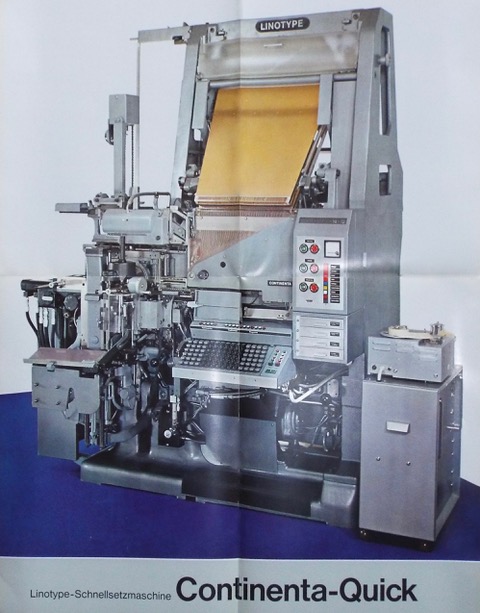
The Continenta could be had as a manually-operated machine offering 28/34/42 Cicero line widths (30/36/42em equivalents) or as a tape-operated version able to cast at speeds of 10 to 15 lines per minute. Weight: 1850kg.
It was a two-magazine mixer utilising standard 90-channel magazines and had a mould wheel with four water-cooled moulds. Hydraquadder and Mohr saw could be added as extras to the basic specification and the machine shown in the colour illustration is thus equipped.
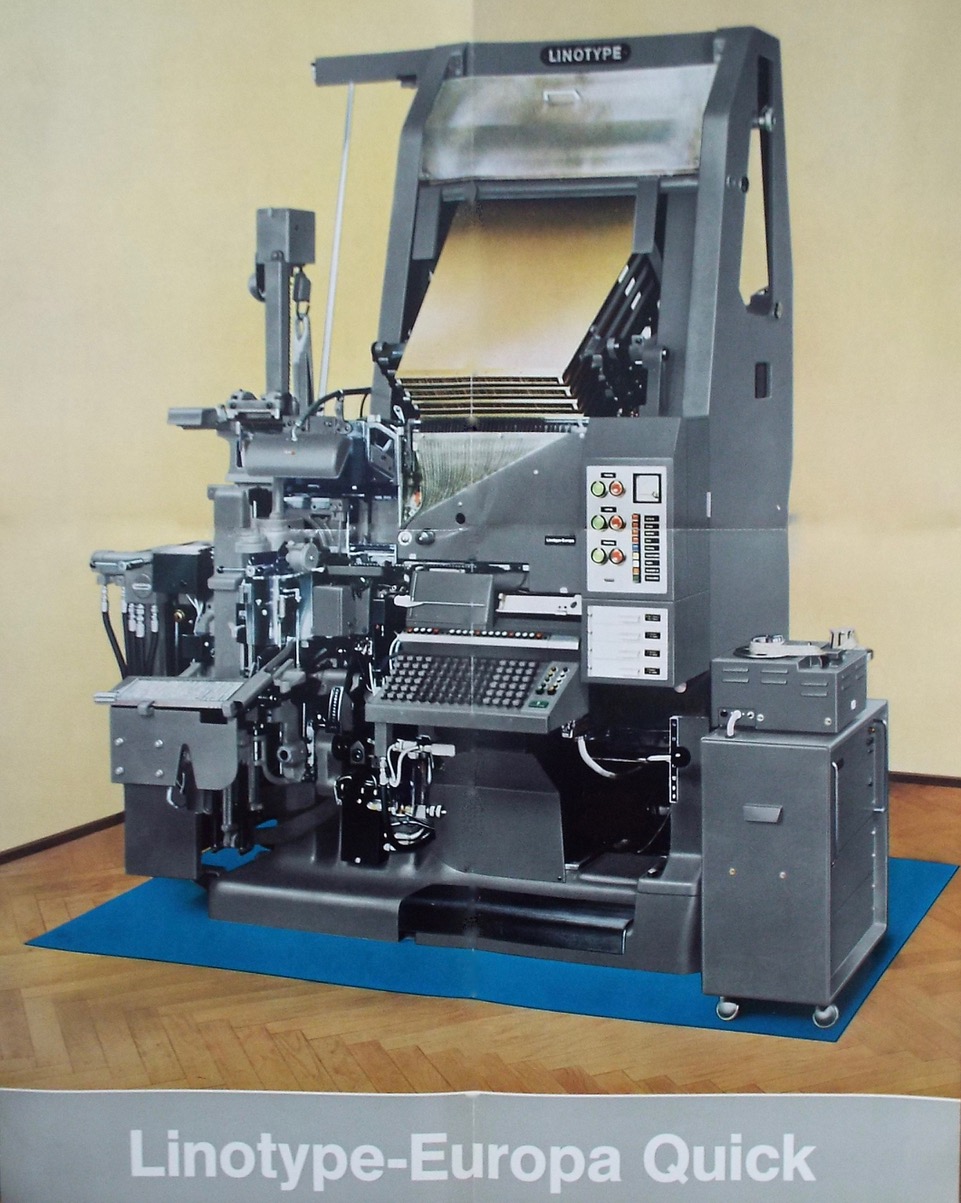
There were two versions of this design, the original and the Europa G Quick, both of which were designed principally for high-speed tape operation but which could also be used manually.
As regards the first-mentioned, it was a four-magazine mixer weighing-in at 2000kg equipped with four water-cooled 28 Cicero (30em) moulds, with provision for extension to 34 Cicero (36em) operation. Magazines were 90-channel configuration. Hydraquadder and Mohr saw could be had as extras and the remarks previously given regarding provision of these features applies again.
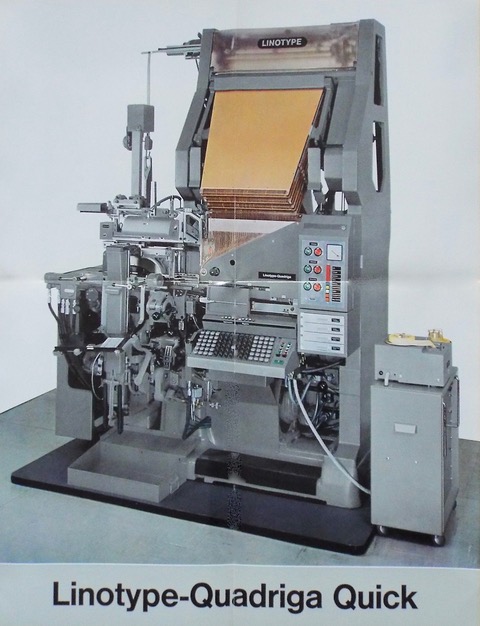
This machine was the German version of the English Model 79 or the American Comet—a high speed model capable of casting 15 newspaper-measure lines per minute when working on tape. It could also be operated manually, when the casting rate could be stepped-down to take account of the fact that not many operators were capable of working at such a high speed and thus there was no valid reason for the machine to be subjected to such wear and tear when there was no call for it. Slowest casting speed was 10 lines per minute.
Unlike its American and English forebears, the Quadriga was equipped with four 90-channel magazines and these were sloped at the steeper 54-degree angle common to all three machines, ensuring that the mats did not hang around once summoned from the keyboard. There was no mixing facility, as the machine was intended as a fast straight text-setter. Hydraquadder and Mohr saw were obtainable as extras; the former would be fairly essential in both manual and tape-operated state, whereas the saw would really only be needed if manual operation was envisaged. The knifeblock could deal with slugs up to 42pt, which again was a feature not needed if tape operation was chosen.
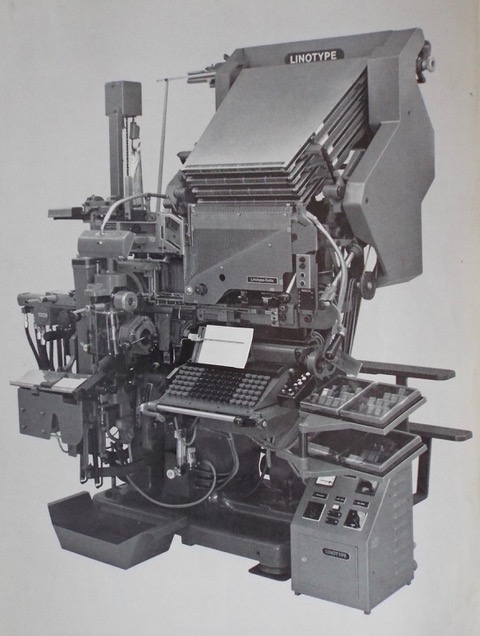
This is what might be called the “base model” in the German Linotype “New Line” range of machines and is a four-magazine manually-operated non-mixer which could be compared to the English Model 78 or the American Model 31.
In its basic form it was fitted with mould equipment for casting from 6pt to 12pt, though alternative equipment could be substituted and the standard knife block could in any case trim slugs up to 42pt. Casts lines up to 28 Cicero (equivalent to 30ems). Weight: 1730kg.
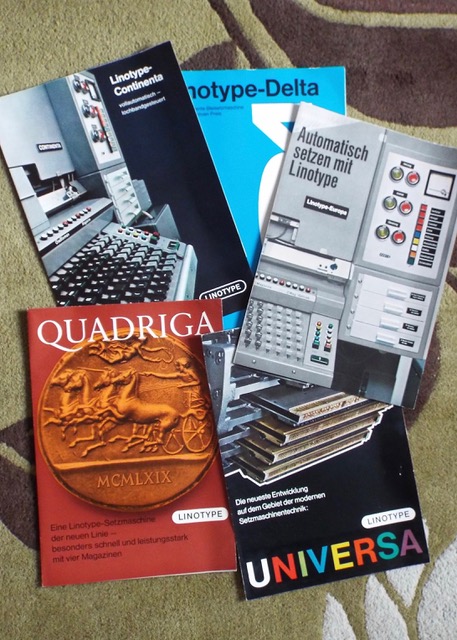
AT the start of the 1960s hot metal composition was still the major source of typesetting in many branches of the printing industry, and though much thought and effort was being expended in developing replacements using photographic techniques, the old order still reigned supreme in many areas and the major manufacturers—Linotype, Intertype, Monotype and Ludlow—were still introducing new machines and typefaces and providing spares for their hot metal systems.
In America Mergenthaler Linotype and Harris-Intertype had introduced new linecasters which were designed to be driven from tape and were thus faster-running—normally operating at around 12 lines per minute on newspaper measures of 11½ems or thereabouts. Anyone who has seen such machines in operation will have been impressed by the speeded-up production rates compared to manually-operated equivalents.